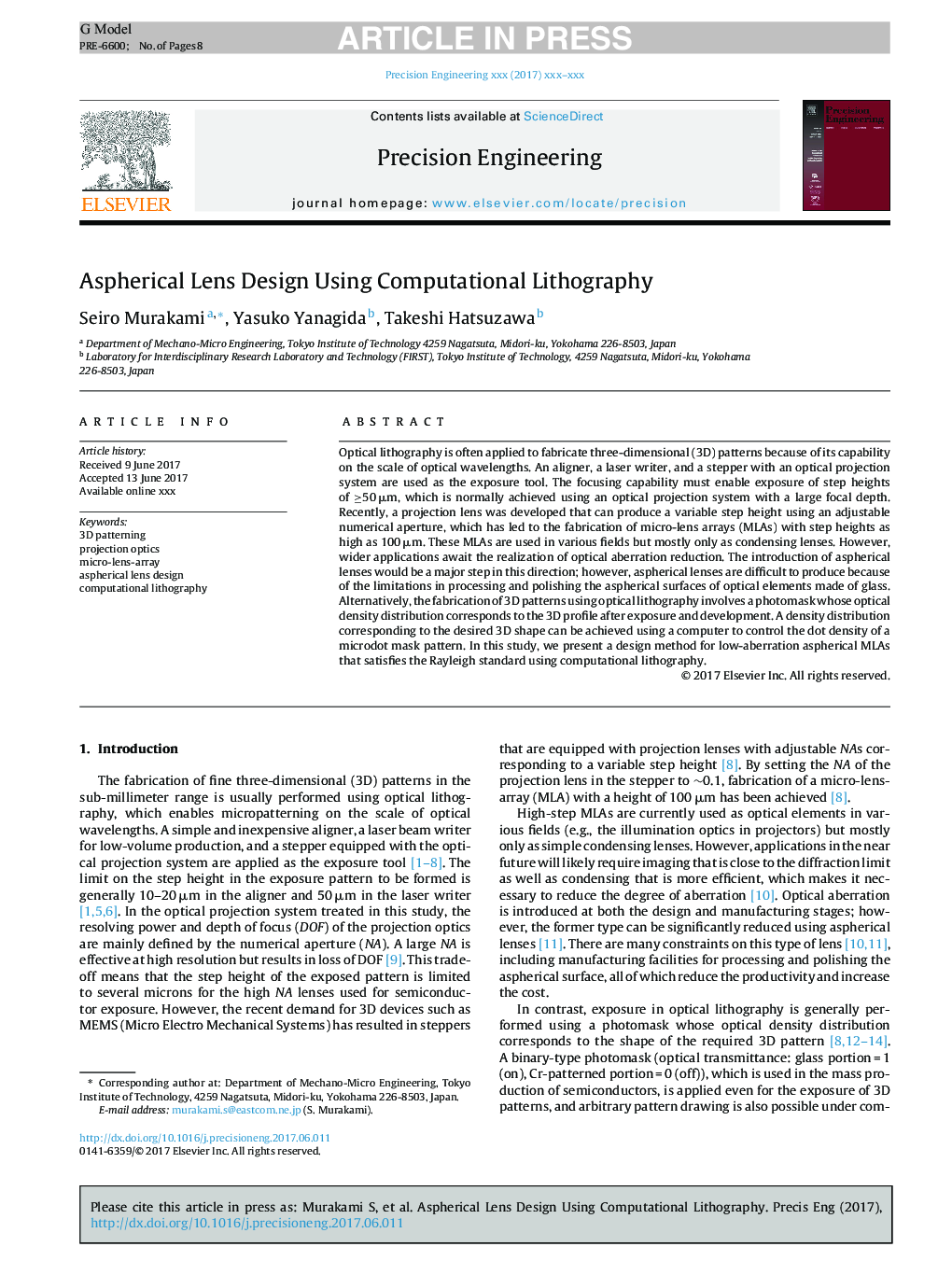| کد مقاله | کد نشریه | سال انتشار | مقاله انگلیسی | نسخه تمام متن |
|---|---|---|---|---|
| 5019057 | 1467838 | 2017 | 8 صفحه PDF | دانلود رایگان |
عنوان انگلیسی مقاله ISI
Aspherical Lens Design Using Computational Lithography
ترجمه فارسی عنوان
طراحی لنز آسفریال با استفاده از لیتوگرافی محاسباتی
دانلود مقاله + سفارش ترجمه
دانلود مقاله ISI انگلیسی
رایگان برای ایرانیان
کلمات کلیدی
موضوعات مرتبط
مهندسی و علوم پایه
سایر رشته های مهندسی
مهندسی صنعتی و تولید
چکیده انگلیسی
Optical lithography is often applied to fabricate three-dimensional (3D) patterns because of its capability on the scale of optical wavelengths. An aligner, a laser writer, and a stepper with an optical projection system are used as the exposure tool. The focusing capability must enable exposure of step heights of â¥50 μm, which is normally achieved using an optical projection system with a large focal depth. Recently, a projection lens was developed that can produce a variable step height using an adjustable numerical aperture, which has led to the fabrication of micro-lens arrays (MLAs) with step heights as high as 100 μm. These MLAs are used in various fields but mostly only as condensing lenses. However, wider applications await the realization of optical aberration reduction. The introduction of aspherical lenses would be a major step in this direction; however, aspherical lenses are difficult to produce because of the limitations in processing and polishing the aspherical surfaces of optical elements made of glass. Alternatively, the fabrication of 3D patterns using optical lithography involves a photomask whose optical density distribution corresponds to the 3D profile after exposure and development. A density distribution corresponding to the desired 3D shape can be achieved using a computer to control the dot density of a microdot mask pattern. In this study, we present a design method for low-aberration aspherical MLAs that satisfies the Rayleigh standard using computational lithography.
ناشر
Database: Elsevier - ScienceDirect (ساینس دایرکت)
Journal: Precision Engineering - Volume 50, October 2017, Pages 372-379
Journal: Precision Engineering - Volume 50, October 2017, Pages 372-379
نویسندگان
Seiro Murakami, Yasuko Yanagida, Takeshi Hatsuzawa,
